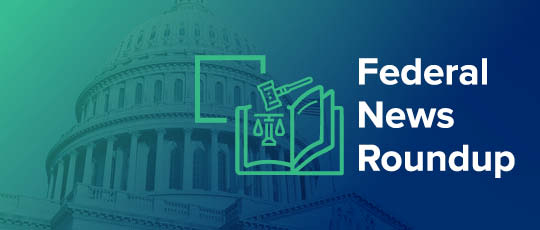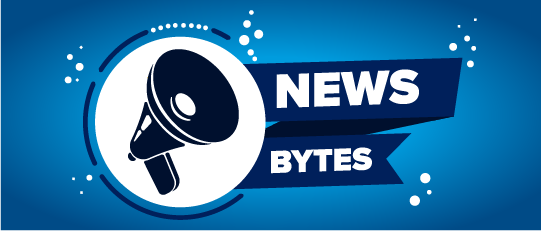For WorldatWork Members
- Checklist for Total Rewards to Be Compliant with H.R. 1 Provisions, Workspan Daily Plus+ article
- Total Rewards Inventory of Programs & Practices, research
- Benefit Document Builder, tool
- Benefits Pulse: A Guide to Listening, Learning, and Leveling Up, tool
For Everyone
- The Facts on Tax: Breaking Down the H.R. 1 Overtime, Tips Provisions, Workspan Daily article
- Why Financial Wellness Benefits Are More Important than Ever, Workspan Daily article
- Benefits Barter: The Power of a Paid Time Off Conversion Program, Workspan Daily article
- Regulatory Environments for Benefits Programs, course
Earlier this summer, Republican legislators passed — and President Donald Trump signed — H.R. 1 (also known as the One Big Beautiful Bill Act, or OBBB), which includes a pilot savings plan offering tax-advantaged investment accounts for all U.S. children born between 2025 and 2028.
Specifically, the “Trump Account” pilot program provides each qualifying child a starting $1,000 government contribution. Account funds can be used for broader purposes (e.g., paying for education, starting a business, buying a first home) than, say, existing 529 accounts, which are earmarked specifically for educational purposes.
Access additional Workspan Daily articles related to H.R. 1:
- The Facts on Tax: Breaking Down the H.R. 1 Overtime, Tips Provisions
- How H.R. 1 Changes Your Section 127 and 529 Education Programs
- Prepare Your Systems for H.R. 1-Related Reporting and Administration
- The Impact of the H.R. 1 Law on the Telehealth Safe Harbor
- Charting the Changes: 2026 Benefit Plan Limitations
Access additional Workspan Daily Plus+ articles related to H.R 1:
- Checklist for Total Rewards to Be Compliant with H.R. 1 Provisions
- The Ripple Effect: 529 Plans as a Catalyst for Financial Stability
- What Are TR Pros’ Options for Paid Care Leave Design
According to Evan Morgan, a tax principal at Kaufman Rossin, a Miami-based accounting firm, account recipients must be U.S. citizens at birth with a Social Security number and are otherwise qualifying children of the taxpayer under dependency tests.
Morgan noted Trump Accounts have a $5,000 contribution limit in 2026, with the limit being adjusted for inflation beginning in 2028. Also, contributions are nondeductible to the donor and contribution limits are applied until a beneficiary reaches age 18.
“It is unclear if contributions to Trump Accounts will count against gift-tax exemptions [currently $19,000 per year],” Morgan said. “We believe they will, but that guidance has not yet been issued.”
How Employers Can Contribute and Benefit
Morgan said employers that make contributions of up to $2,500 to Trump Accounts on behalf of employees will receive a tax deduction for their contribution, even though an employee making a contribution on behalf of their dependent will not receive a tax deduction.
Marta Turba, the vice president of content strategy at WorldatWork, said the new benefit may make a difference in the financial well-being of employees and their families.
“It’s potentially a powerful tool that can help ease the financial burden of raising children, which is something many employees can really appreciate,” she said.
Turba added that for employers, one of the key decisions is whether to contribute the allowable employer contribution.
“While it’s not mandatory, adding this to a ‘family-first’ benefits package can be a plus and show your company truly cares about its employees,” she said, noting that if employers do decide to contribute to the OBBB plan, there also are some compliance elements to keep in mind.
For example, total rewards (TR) professionals will need to coordinate with payroll providers to manage the administrative aspects of the benefit. This includes setting up the program and ensuring it runs smoothly, Turba explained. Also, the program must be a separate written plan of the employer, exclusively for the benefit of employees. It also needs to meet a series of conditions similar to those for dependent care assistance programs (DCAPs) under Internal Revenue Code Section 129(d), which allow employers to provide employees with tax-free benefits to cover dependent care expenses.
According to Rob Austin, a vice president for value engineering at Alight Solutions (a provider of cloud-based human capital and technology-enabled services), employers are increasingly recognizing innovative ways to enhance their benefits packages, and these specialized savings accounts can offer another such solution. He said the accounts, designed for newborns, provide a unique opportunity for young families to help build long-term financial security.
“By offering employer-matching contributions, companies can differentiate themselves in a competitive job market, particularly when targeting millennial and Gen Z professionals who might prioritize comprehensive family-oriented benefits more than other generations,” Austin said.
(Many providers, including Alight, offer online guidance for employers regarding this new benefit.)
Providing Messaging on Financial Well-Being Benefits
According to Turba, when it comes to communicating the terms of this benefit, TR professionals face a challenge.
For instance, whether or not an employer decides to contribute, she explained, it’s crucial to help employees understand how to claim and take full advantage of any entitled benefits funded through the government program.
“This means providing clear, step-by-step instructions and being available to answer any potential questions,” she said.
Turba also explained it’s also important for employers to let employees know about other financial tools that can help achieve some of the same goals. For example, if an employer offers a 529 plan, it may deliver similar or even greater benefits for education. Comparing these options — without providing direct financial advice — can help employees make the best choice for their families, she added.
“This new benefit is a great opportunity to support financial well-being, but since it affects a limited number of people and has some complex details, targeted, specific communication is critical,” she said. “It’s all about making sure eligible employees understand the value and know how to take full advantage of it.”
To Turba, TR pros must break down who can benefit from this and how it can make a positive difference in their financial lives and those of their families. Also, she said they should give employees a clear, easy-to-follow guide on how to enroll in the program.
“If your company is sponsoring contributions, explain how employees can start receiving those, as well,” she said. “Make it as simple as possible, so no one gets lost in the process.”
Additional Considerations
According to Alight’s Austin, TR teams will need to tread carefully when communicating information about these accounts to their workforces. For one thing, given the current political climate, the benefit branded as “Trump Accounts” could trigger some knee-jerk responses before workers even understand the potential financial benefits.
“Employers will need to provide clear, comprehensive guidance to help employees navigate the nuanced tradeoffs between different savings vehicles and make the most strategic financial choices,” he said.
In Austin’s view, a smart approach is to keep the messaging focused on the financial opportunity, steering clear of political undertones.
“By framing it as yet another tool to help employees build financial security, companies can turn a potentially tricky communications challenge into a positive benefit conversation,” he said.
Also, these accounts are slated to receive contributions in 2026; currently most employers are waiting for regulatory guidance before making commitments, Austin said.
“There are key outstanding questions that could substantially impact the administration of an employer match to Trump Accounts, like whether the $2,500 employer contribution is annual or one time,” he explained.
Austin said HR/TR leaders will want to monitor these developments closely as the details become clearer, noting they’ll also, of course, want to keep an eye on how many people are contributing to these accounts when they do become available.
“While every worker and employer would love to fully fund every available savings vehicle, budget realities mean that most will need to make tradeoffs, and Trump Accounts may not receive many contributions outside of the government-provided $1,000 seed money,” he said.
Editor’s Note: Additional Content
For more information and resources related to this article, see the pages below, which offer quick access to all WorldatWork content on these topics:
#1 Total Rewards & Comp Newsletter
Subscribe to Workspan Weekly and always get the latest news on compensation and Total Rewards delivered directly to you. Never miss another update on the newest regulations, court decisions, state laws and trends in the field.








